The Surface 3 Review
by Brett Howse on May 4, 2015 9:00 AM ESTThe Kickstand Evolved
What has set the Surface line apart from all other tablets has been the inclusion of a built in kickstand. This simple addition is the key to the entire Surface philosophy. Surface RT came with a single position kickstand, Surface 2 moved it to a two position kickstand, and Surface Pro 3 changed the game again with an infinitely adjustable kickstand. The Surface 3 takes a slight step back, to save cost and weight, and goes with a three position kickstand. When Anand reviewed the Surface 2, he said that the addition of the second position fixes most of his issues with the original kickstand but he would love to see at least one more stop added. The Surface 3 delivers that third position, and lets the Surface 3 open even wider. While the Pro 3 kickstand may seem like the better version due to the infinitely adjustable angles, the Surface 3’s three position model is much easier to operate. The Pro’s friction hinge is very stiff so that it does not collapse when being used, but the three position version on the Surface 3 simply snaps from one location to the next.
Having the third position really helps in a lot of situations, and while I would have liked the final one to open as wide as the Surface Pro 3, it still opens sufficiently to watch content in your lap or to use the pen on a desk or table. Overall, it is still a step back from the Pro 3, but it fits in well and still makes the Surface 3 one of the most versatile tablets ever made.
In fact, looking at the hinge kind of sums up the entire device. It is very similar to the Pro 3, but slightly stepped back. The build quality of the stand is as good as ever, and there is still the reassuring ka-chunk when it is snapped closed.
One interesting thing on the Surface 3’s kickstand is the new logo. Microsoft has been changing the logo on Surface on almost every iteration, and they obviously still were not happy with the Pro 3’s Surface branding. The Surface 3 features a polished Microsoft logo now, perhaps signifying that this device is really more about the company and its direction than any single product line.
The Keyboard
Another key feature of Surface since its launch was the magnetically attached keyboard. The first generation devices could be had with either a touch keyboard, which did not have mechanical keys, or the type keyboard, which was slightly thicker but offered actual keys. Considering the tiny difference in size and weight versus the sometimes jarring difference in using a touch keyboard, it makes sense that the type keyboard is now the only option.
If you are new to Surface, the keyboard attaches magnetically to the bottom of the device, and can be used as a display cover when the device is not in use. When in tablet mode, the keyboard can be folded around the back like a normal tablet cover. The magic happens when you can set the Surface up on its kickstand, and the keyboard allows the tablet to be used as a laptop.
The Surface 3 keyboard cover is unsurprisingly smaller than the Surface Pro 3 model, due to the smaller display size of the new device. However the keyboard is only a little bit narrower than the Pro’s type cover. I did not have any issues typing on it despite the slightly smaller width but I have always used smaller devices. The keys themselves are surprisingly good considering how little travel there is. Microsoft has also kept the backlighting available with a couple of different levels on tap.
One big change compared to the Surface Pro 3’s type cover is the top row of function keys have ditched the Windows 8 keys and replaced them with the more standard function keys of a traditional laptop. Microsoft made a move to distance itself from Windows 8 with the Windows 10 naming scheme, and they are following through with that on this new device. Personally I find the new keys (which are really the old keys) much more useful than actions I could easily get to through the Charms anyway, so this is a net win for users.
For those that really pay attention, there are some other subtle differences in the keys as well. It is not an exact duplicate on a smaller scale, and instead a couple of things have been tweaked. One thing that has changed is the auditory response. Although some people love a good clack when typing for feedback on key presses, the sound was a bit much when there were a couple of people at a meeting, so Microsoft has tweaked the keyboard to be a bit quieter. The keys also have a slightly higher moment of inertia, and it takes a bit more force to actuate.
The trackpad is small. The Surface Pro 3 has a small trackpad, and so does the Surface 3. I have found it to be fairly accurate and easy to use, but it is very space constrained. There is not much that can be done here because the design of the Type Cover does not leave any room to move the keyboard up. This is because the Surface 3’s type cover features the same double latch system like on the Pro 3. If needed, the back of the keyboard can be snapped onto the bottom of the tablet to offer an additional contact point for it. This increases the stability of the keyboard quite a bit, but a big trade-off is the size of the trackpad.
The covers also have the same attention to detail as the rest of the tablet. With the cover closed, the exact same bevel on the sides is maintained with the cover, which is just slightly wider than the device to keep the angle correct. These are the kinds of touches that help put this tablet a step ahead on its build and design.
For those that like choice, the new type cover will be available in some splashy colors with blue, red, black, bright blue, and bright red. Everyone likes to put their own take on a device so it is great to see those options available.
Now for the elephant in the room. Price. The Type Cover is not an inexpensive accessory. At $130, it adds 28% to the bottom line when compared against the entry level Surface 3 tablet itself. That’s a big pill to swallow.
Microsoft’s vision of the Surface 3 is a tablet that can replace your laptop, and to do that, you need a keyboard. It is a lot better than an add-on Bluetooth keyboard, and acts like a cover too which saves you needing one of those as well, but still at $130 it is a big ask. You could of course use a USB or Bluetooth keyboard as well. Maybe you want to use it as a tablet when mobile, but back at your desk you can just plug it into a keyboard. That’s going to work great. But the Microsoft one really completes the Surface 3.
That said, do you really need the keyboard? Likely not, at least not if you are OK with the device being used mostly as a tablet. This at the end of the day remains a big part of the reason that the Surface 3 is sold without a keyboard, along with allowing it to hit a $499 price tag to be priced competitively with the Apple iPad Air 2.
As for the testing at hand, in most of my use with the tablet over the last couple of weeks, I would almost always remove the keyboard before using it. This saves a bit of weight, but also prevents the keys from being folded behind and making for an uncomfortable device to hang on to. So most of the time I would get by without it, but then when I want to type of an email, I fall back to snapping the keyboard back on (can we please get the Wordflow keyboard in Windows already?) so even though I do not use the keyboard all the time, I would still miss it if it were gone. It is not a must buy, but it is close, which puts a big dent in the price point of Surface 3.
The Pen
Surface 3 now features the same N-Trig pen technology as the Surface Pro 3. Just last week, Microsoft officially acquired this technology from N-Trig, so it looks like Surface Pen is here to stay. And that’s a good thing.
None of the previous non-Pro models ever had support for a pen, and adding it to this model really increases its appeal. Surface is now a fantastic device for note-taking, and just like the Surface Pro 3, the pen is Bluetooth equipped and you can launch OneNote just by clicking the button on top. There are even several colors of pen available to let you match it to the keyboard if you like.
In addition, there is now a Surface app installed by default to let you customize the pen and other functions.
One of the complaints about the Surface Pro 3 when it first launched was that the Start Button on the right side of the screen can cause you to jump to the start menu when writing. That appears to be sorted out now, and in the Surface app, you can enable a feature to avoid inadvertent presses of that key.
You can also adjust the pressure sensitivity of the pen to what suits your writing style, and the top button can be configured to launch OneNote either on the desktop or the default Windows Store version.
I found the pen to be a fantastic addition to the tablet, and it opens up a lot more use cases for the device. Almost every time we put up a news post about a tablet, one of the first comments is “does it have pen support?” and now we can say yes, even on the less expensive Surface models. With Windows 10, inking is getting a lot more support right into the operating system so it makes a lot of sense for Microsoft to try and showcase that with their first party devices.
The Dock
Last year Microsoft introduced a dedicated dock for the Surface Pro 3 to let you use it easily with an external monitor and keyboard/mouse. They have made a big push to make Surface Pro 3 a win in the enterprise segment, and you need to have a dock for that to happen. Although the dock is not inexpensive at $199, it has a great design and uses the power port for expansion.
The Surface 3 has a similar dock, and for the same price. Although not as powerful as the Surface Pro 3, they are obviously hoping they will find some traction in the enterprise with the smaller device as well. The dock is well made, and it is very easy to dock the tablet with the wings that slide in and out. The left side of the dock features a magnetic spot to stick the pen when it is not in use, and you can dock the tablet with the keyboard attached.
Unlike the Surface Pro 3 though, the dock is basically just a port extender and connects to the existing DisplayPort and USB connectors and replicates them out. But it does give you plenty of connections once it does that. There are two USB 3.0 ports available, and two USB 2.0 ports on the back. Plus you get Gigabit Ethernet, and a full sized DisplayPort.



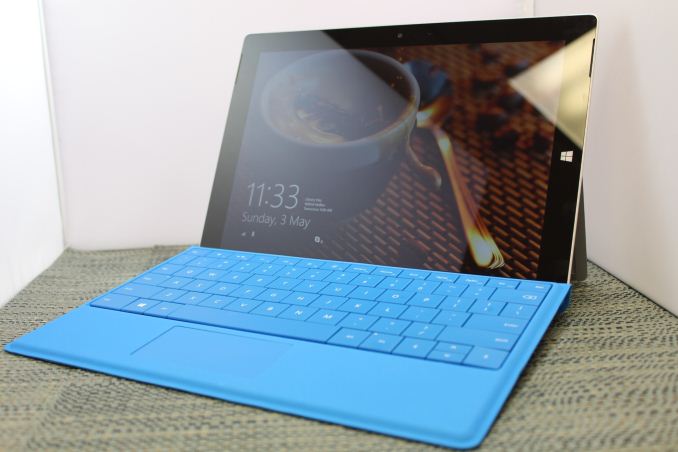
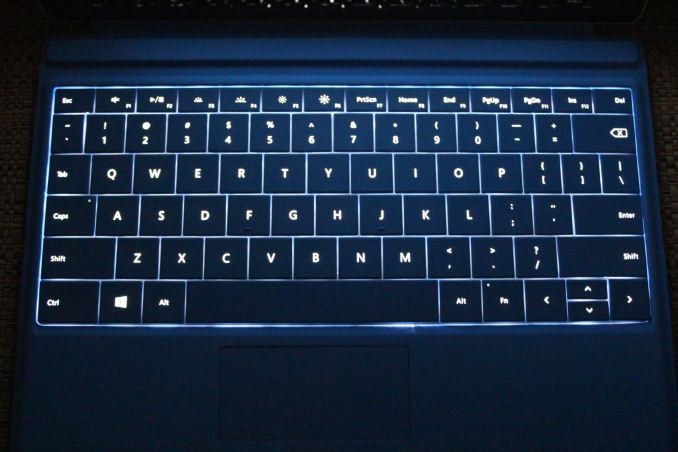
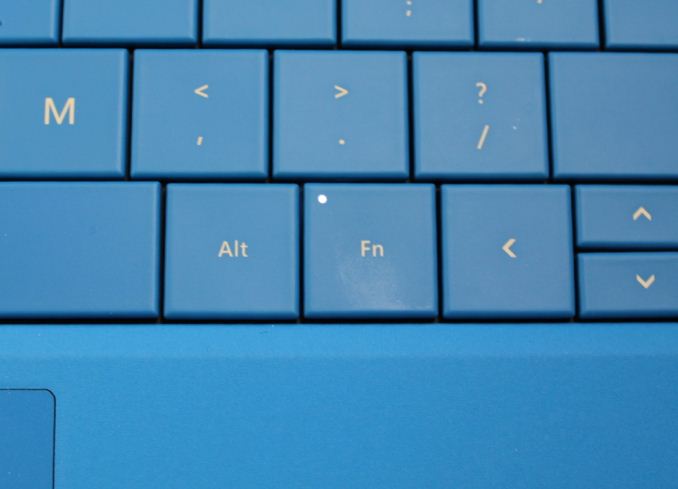
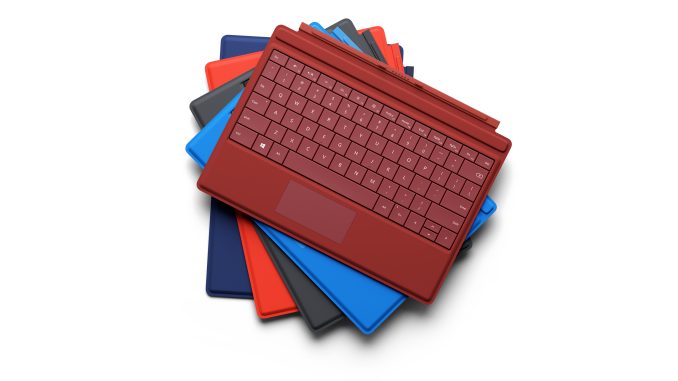
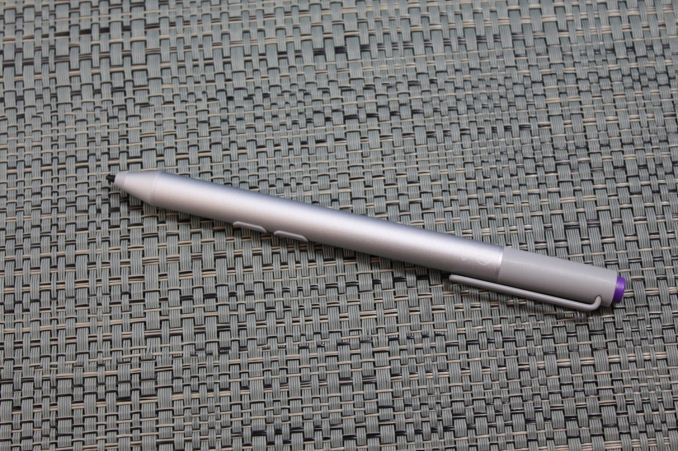
_thumb.png)
_thumb.png)
_thumb.png)
_thumb.png)
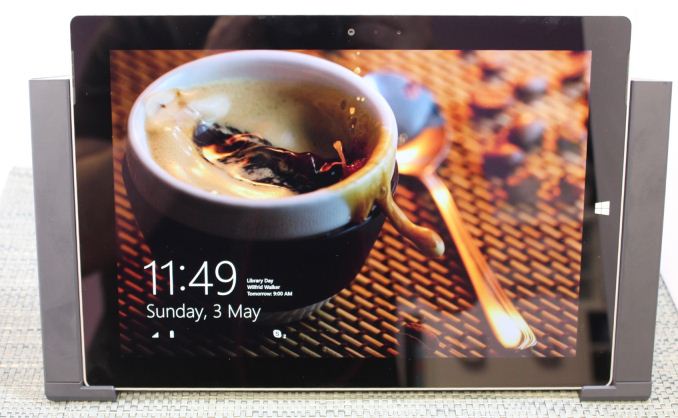













265 Comments
View All Comments
MrTetts - Tuesday, May 5, 2015 - link
The IPad is ALWAYS going to be an inferior product regardless of use case.1. For video/media consumption - you would have access to more media players, more content markets (than just the itunes store) and simply more choice overall.
2. For media/content creation - You do not even have this option (or intergrated well enough) on an IPad.
3. Basic office duties - We can all agree that any office applications on an IPad would be very watered down and frankly quite useless. If you have to buy a keyboard to access an application properly on an ipad, then my friend, I have news for you... your use case clearly aligns you to a surface 3.
An IPad is no where near up to par. You are getting a very big IPod Touch for your money. Don't give in to the marketing from Apple telling you you can be productive on an IPad...
V900 - Tuesday, May 5, 2015 - link
Oh my holy God! Amazing! Through some sort of quantum fluctuation in some internet backbone somewhere, a wormhole in space time has made your post appear three years into the future!Hello there Anandtech reader from 2012! We hear you loud and clear this is Anandtech 2015! As for your points, a lot has changed/will change from your perspective!
1: IPads in 2015 are better for using content... The vast majority of video is in MP4 formats. The few formats an iPad can't decode natively you can get a third party app for in the AppStore for a few dollars or free. As for content, the vast majority is available through the web or (usually) free third party apps.
2: Content creating: In 2015 its a clear win for the iPad if you want to use a touchscreen. It's not even close with Windows tablets. Adobe for example has over 20 apps for iPad. In your future and my present, even content creation suites that used to only be available for PC/Macs have an iPad app solution available as well.
3: Basic Office: everyone in your time that is skeptical about Microsofts plans are right. In 2015 there is a
multitude of office solutions for iPads, and even Microsoft have given up and gone all in on the platform... The MS Office for iPad is on par with the MS Office for Windows, and blows MS Office for Touch Windows completely out of the water. Microsoft of the future will bet big on iOS...
Take care 2012 Anandtech reader! Oh, I probably cant tell you much about this, but be careful with the middle east! There is a group in Iraq that you really shouldn't underestimate... They will wreck some major chaos later in the timeline if you don't try to stop them in 2012!
damianrobertjones - Wednesday, May 6, 2015 - link
Yet if you type one line of text on the ipad it's a great big pain in the rear to edit. Where's the back arrow key? I've an Air 2 and, being honest, it's a pain to use for anything serious. Heck the other day I just wanted to copy some comics onto the thing... usually I'd just slap them on but instead I had to place them onto the network, launch an app, log in and then read.The app situation will improve when Windows 10 hits but, until then, I'll be happy to just launch the FULL application.
digiguy - Wednesday, May 6, 2015 - link
how much nonsense in a single post.... You probably don't know how to use Office and Adobe professionally.... or you live in 2015, but on a different planet... My ipad air is a great device, but that's far from being the machine to work on....Michael Bay - Wednesday, May 6, 2015 - link
>MS Office for iPad is on par with the MS Office for WindowsIf you step aside from pure lulz one has with such a comment, it`s quite sad that sheeple actually believe that.
MrTetts - Tuesday, May 5, 2015 - link
Bottom line is...If you're in the market for an iPad. Consider the Surface 3 for the 'Just In Case' factor.
1. Just in case you want to edit a word document properly.
2. Just in case you want to create media.
3. Just in case you want to download movies/music from a website.
4. Just in case you want to use adobe products.
5. Just in case you don't want to connect the tablet to your TV.
6. Just in case you want to charge your phone using a tablet.
7. Just in case you actually want to write notes in class/during meetings at the office.
8. Just in case you want expandable memory.
9. Just in case you don't want to be locked into the apple ecosystem.
10. Just in case you save things to a memory stick, rather than a cloud which you get charged for.
and i could go on... Just consider the Surface 3.. Just in case.
V900 - Tuesday, May 5, 2015 - link
OMG! The wormhole is still open!LOL! Read my other post Anandtech from 2012! Nothing on your list is accurate or will matter much in 2015...
Both Adobe and Microsoft have gone all in on iPads. Adobe has over 20 apps on iOS, and nothing on Windows that you'd bother running on a touchscreen or with a tablet class processor.
Don't consider the Surface 3. Not even for just in case. You can always get either a better laptop or a better tablet for the same
money. The Surface 3 is worthless, considering that for 500-600$ you can get an alright laptop AND an iPad mini: Beat of both worlds!
damianrobertjones - Wednesday, May 6, 2015 - link
Or a Surface Pro 3.Michael Bay - Wednesday, May 6, 2015 - link
Do they at least pay you for this drivel?kyuu - Wednesday, May 6, 2015 - link
How in the hell is carrying two devices -- one of them a crappy laptop, the other a tablet with a small screen that's basically just an oversized iPhone -- the best of both worlds?